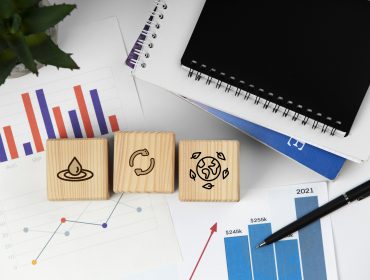
Three ways SMEs can stay on top of returns
April 28th, 2017 – Put a robust agreement in place with suppliers, use data to identify serial offenders and commonly-returned items, and don’t be afraid to ask more questions about the nature of a return.
Online retail has made it possible for customers to shop from the comfort of their sofas, curled up with a cuppa, but it has removed the option of trying before they buy. It has created a culture where shoppers might buy six items and return five, no questions asked.
Larger businesses can often absorb the costs associated with high levels of returns, but small and medium-sized enterprises (SMEs) could find their finances taking a hit.
SMEs need to have returns policies that feel welcoming, but still allow them to remain competitive. So here are three tips on how to handle the process.
Have robust agreements with suppliers
A big part of handling returns effectively is creating the right agreements with suppliers, says Russell Grant, SME consultant at online support network, Business Doctors.
“That means a commitment to compensate the business for all costs, including the product, transport, labour, admin and so on – [anything] associated with the return of products that they have supplied,” he explains. “This will enable SMEs to act quickly in the full knowledge that they will be fairly compensated by their supplier.”
SMEs should have returns policies that are clearly communicated, adds Mr Grant. They should be well-researched and supported by the necessary resources required to deliver them – namely, logistics and customer service.
Use your data wisely
The problem of serial returners (those who return a lot and often) has led some retailers to seek out smart ways of avoiding financial damage, says Derek O’Carroll, chief executive of retail management platform, Brightpearl.
He recommends that businesses use their existing sales data to pinpoint customers with a greater propensity to return items, and avoid targeting them with marketing promotions or discounts.
“This data also allows retailers to highlight products with higher return rates and decide whether to raise prices, reduce marketing efforts, or stop selling them entirely,” he adds.
This gives retailers the opportunity to improve product quality and make customers less likely to return items, reducing losses for the business, explains Mr O’Carroll.
Reach satisfactory solutions with customer
For homeware brand, Andrew James, maintaining good relationships with customers is vital when dealing with returns. But it can be tricky, says the company’s marketing manager, Graeme Coyle.
The business recently amended its returns policy to minimise the number of customers regularly sending back certain products;
it now challenges them more vigorously about the nature of their returns, he says.
“Now we request proof that the item, if electrical, has had the power cord cut, so it’s unable to be used again,” he explains. “Only then will we issue the refund or replacement.”
If a customer is unhappy with the process, it’s crucial to listen to what they have to say and try to find a solution that satisfies everybody, advises Mr Coyle. To ensure repeat custom, shoppers should be happy with any contact that they’ve had with the company – and feel confident about buying again.
He adds: “It’s important that the customer realises we’re there to help them. We emphasise the positives in everything we do for them.”
Written by The Telegraph
Photo: The Telegraph
Related Post
Equipping SMEs with the skills to...
SMEs and entrepreneurs heavily depend on skills to stay competitive and face greater challenges than larger firms in accessing and retaining...
The future of entrepreneurship with AI
AI-native startups are redefining the nature of entrepreneurship through accelerated scaling. With leaner teams, evolving funding dynamics, ...
Micro and small businesses can act...
In an international context where conflicts have reached their highest level since the Second World War, what role can micro, small, and med...




